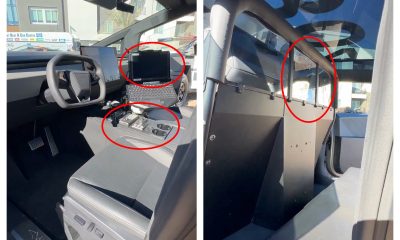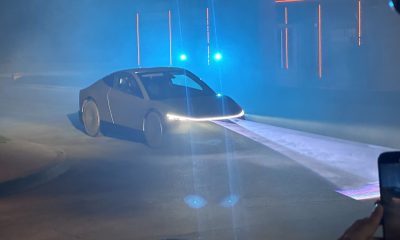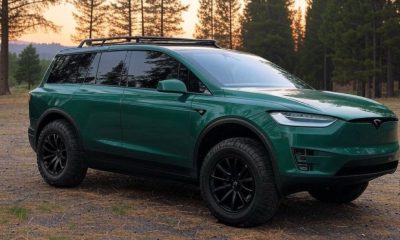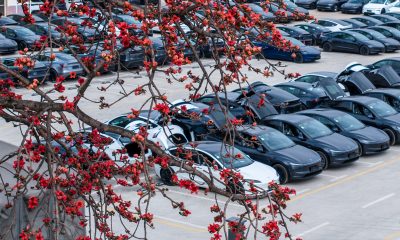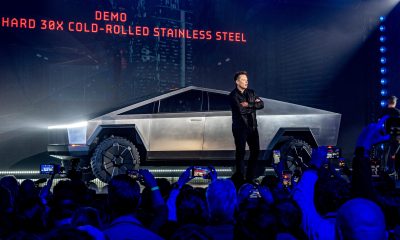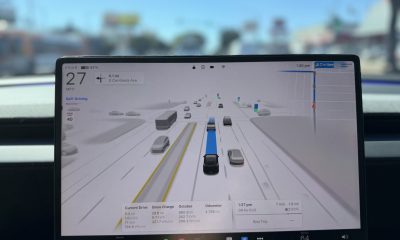News
Details behind Model X owner’s $5M+ class action lawsuit against Tesla
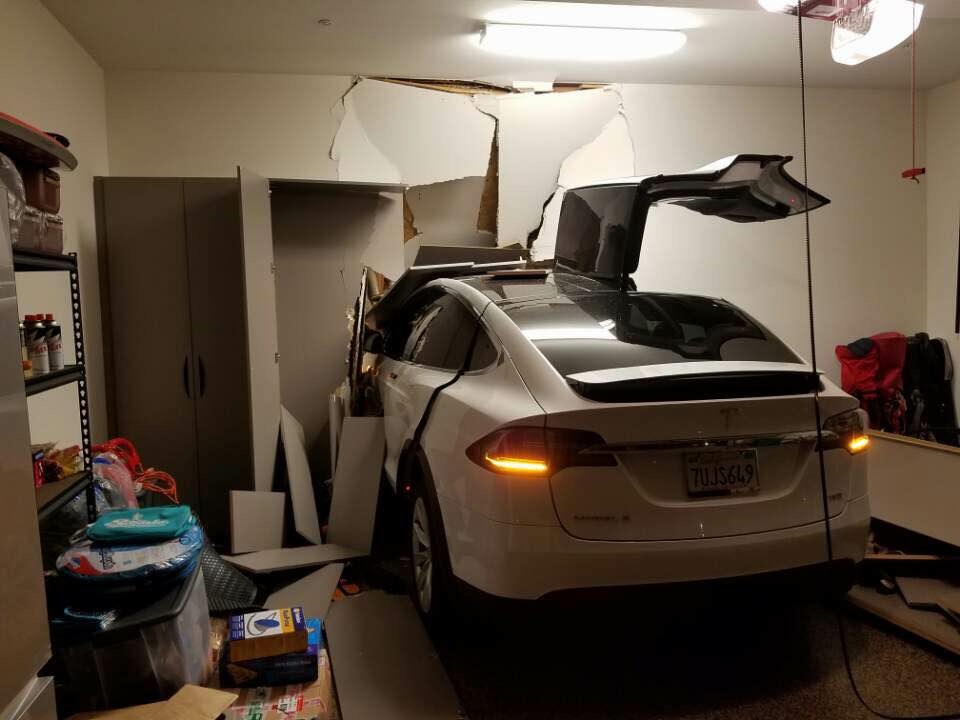
Following our report that a Model X owner has filed a class action law suit against Tesla, claiming a widespread defect in the vehicle’s onboard software causes sudden unattended acceleration (SUA), new details behind the suit have been obtained by Teslarati that shows a legal team aggressively targeting the core component to the Silicon Valley-based electric car maker’s fleet of vehicles.
The class action filed in federal district court claims Ji Chang Son – Korean star residing in Orange County, Calif. – crashed through his garage and into the living room of his home after his Tesla Model X accelerated suddenly and without warning on September 10, 2016, approximately one month after Mr. Son took delivery of the electric SUV. The suit claims that “Tesla has failed to properly disclose, explain, fix, or program safeguards to correct the underlying problem of unintended acceleration”, adding that “over sixteen thousand Model X owners with vehicles that could potentially accelerate out of control.
Son’s attorneys gave the court a full account of the development of the Model X, focusing on the company’s claim that the Model X is “the safest, fastest and most capable sport utility vehicle in history.” On the contrary, according to Son’s attorneys. They allege the Model X has a safety defect that permits the car to accelerate at full speed directly into solid objects, such as the exterior wall of Son’s home. In particular, they point out that 8 written complaints have already been filed with the National Highway Transportation Safety Administration from other Model X owners who report similar occurrences while driving their cars.
The lawsuit reads,
“Irrespective of whether the SUA events in the Model X are caused by mechanical issues with the accelerator pedal, an unknown failure in the electronic motor control system, a failure in other aspects of the electrical, mechanical, or computer systems, or some instances of pedal misapplication, the Model X is defective and unsafe. Tesla’s lack of response to this phenomenon is even more confounding when the vehicle is already equipped with the hardware necessary for the vehicle’s computer to be able to intercede to prevent unintended acceleration into fixed objects such as walls, fences, and buildings.
Despite repeated instances of Model X drivers reporting uncommanded full power acceleration while parking, Tesla has failed to develop and implement computer algorithms that would eliminate the danger of full power acceleration into fixed objects.This failure to provide a programming fix is especially confounding for a vehicle that knows when it is located at the driver’s home and is being parked in the garage, yet carries out an instruction, regardless of whether through an error by the vehicle control systems or by driver pedal misapplication, to accelerate at full power into the garage wall.
Further, not only has Tesla failed to fix the problems, it has chosen instead to follow in the footsteps of other automobile manufacturers and simply blame the driver.”
One problem, according to Son’s attorneys, is the software that controls the Automatic Emergency Braking system. Tesla has programmed that feature to disengage in order to allow drivers to make emergency maneuvers, “in situations where you are taking action to avoid a potential collision. For example:
- You turn the steering wheel sharply.
- You press the accelerator pedal.
- You press and release the brake pedal.
- A vehicle, motorcycle, bicycle, or pedestrian, is no longer detected ahead.”
In other words, say the attorneys, a Model X will drive straight into a solid wall if that is what the system thinks the driver wants it to do. “Apparently, this includes situations where the computer believes, rightly or wrongly, that the driver is commanding full power acceleration directly into fixed objects immediately in front of the vehicle.”
Class action lawsuits are complex and highly specialized legal actions. Federal law requires that the damages alleged for the entire class exceed $5 million. The plaintiff’s attorney have done so by claiming that Tesla is aware of at least two other instances in which drivers allege sudden unintended acceleration occurred while driving their Model X at low speeds. They then extrapolate those numbers to suggest that the rate of SUA incidents attributable to the Model X is 64 per 100,000 vehicles — substantially higher than for any other vehicle in history.
They point out that the incidence rate of SUA incidents for Toyota vehicles — which grabbed national headlines in 2010 — was far lower. They then go on to remind the court that Toyota paid several hundred million dollars to SUA victims as well as a $1.2 billion federal fine. Notice that the chart included in the pleadings shows an exaggerated and disproportionate projected SUA incidence rate for the Model X highlighted in bright red.
Tesla says its data retrieved from the vehicle’s blackbox shows the accelerator in Son’s Model X was fully depressed when the accident occurred. The question for the court will be whether the driver pressed the wrong pedal or whether the vehicle accelerated on its own. It is unclear whether a software failure would register the pedal as fully depressed even if it was not physically operated by the driver.
Plaintiffs always have the burden of proving their allegations. Attorneys for injured parties often rely on a legal doctrine known as res ipsa loquitur, which is Latin for “the thing speaks for itself.” Loosely translated, it means “we don’t know what is wrong with your product that you designed and built, but you know or should know.” Res ipsa loquitur shifts the burden of proof onto the defendant, which makes it much easier for a plaintiff to prevail in court.
One advantage the plaintiff gains from filing suit is the ability to discover what information Tesla has that is not yet public. Does Tesla know something it isn’t telling its customers? We may find out as this litigation goes forward.
We’ve provided a copy of the entire class action filing below.
[pdf-embedder url=”http://www.teslarati.com/wp-content/uploads/2017/01/Son-vs-Telsa-class-action-8-16-cv-2282.pdf”]
Cybertruck
FIRST LOOK: Tesla Cybertruck police cruiser interior
The LVMPD released a new video of the police cruisers that were donated by billionaires Ben and Felicia Horowitz.
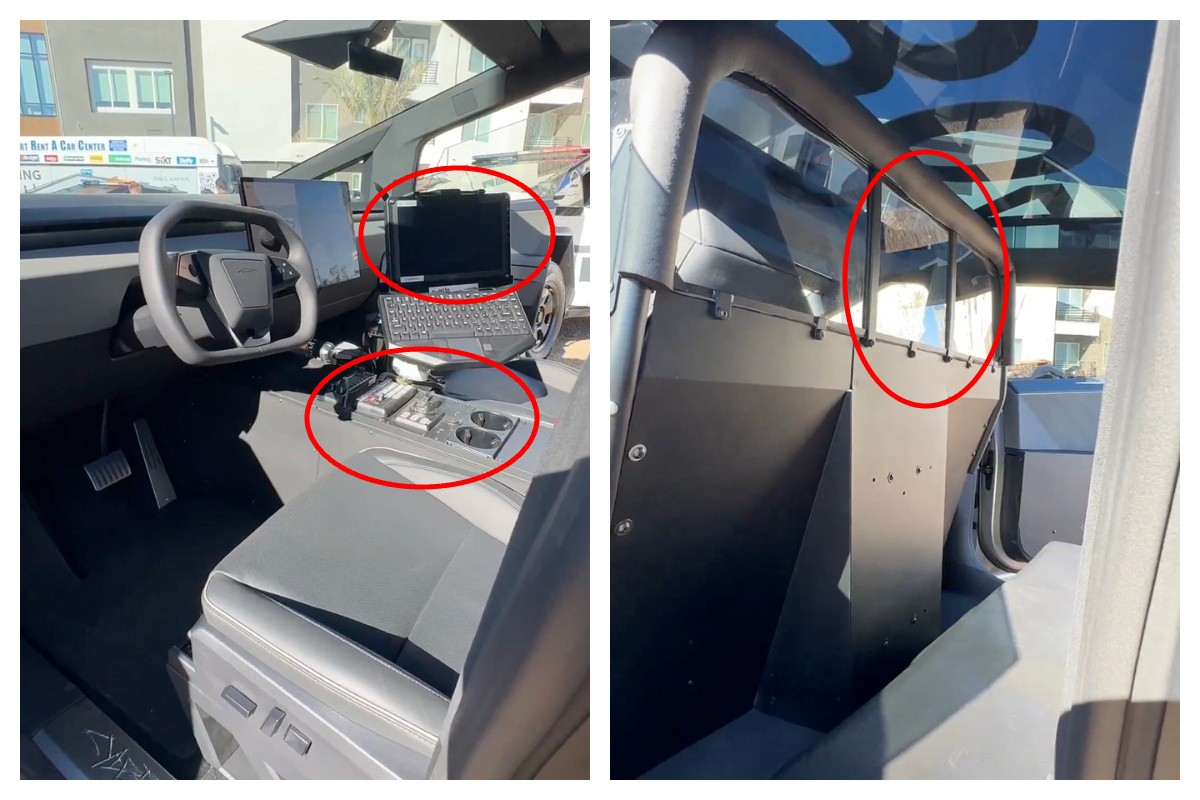
The first look at the Tesla Cybertruck police cruisers for the Las Vegas Metro Police Department has been going around as the city begins to add them to its active fleet.
The LVMPD released a new video of the police cruisers that were donated by billionaires Ben and Felicia Horowitz, showing their design, as well as the first look at the front of the vehicle where police will sit, as well as the back where the criminals will think about their actions.
Tesla Cybertruck police fleet in Las Vegas pic.twitter.com/Z8t2wLMVR3
— TESLARATI (@Teslarati) October 30, 2025
Sheriff Kevin McMahill commented on the addition of the Cybertrucks to the fleet, which includes recognition of their symbolism regarding the mission of the Department itself:
“These represent something bigger than a police vehicle. They represent innovation and our continued commitment to serve this community with the best tools available — safely, efficiently, and responsibly. They can handle everything from Fremont Street to Red Rock Canyon.”
The LVMPD had the Cybertrucks primed for law enforcement use by Upfit Tesla, a division of Unplugged Performance, the unequivocal leader in performance upgrades for Teslas.
The first look at the interior of the police cruisers is awesome to see, especially as it shows the Cybertruck’s ability to cater to every and any application for personal or professional use.
The front of the Cybertruck police vehicle shows an interior fully outfitted for a shift in Las Vegas. A laptop is mounted next to the center touchscreen, and siren and light controls are located in the center for easy access for officers:
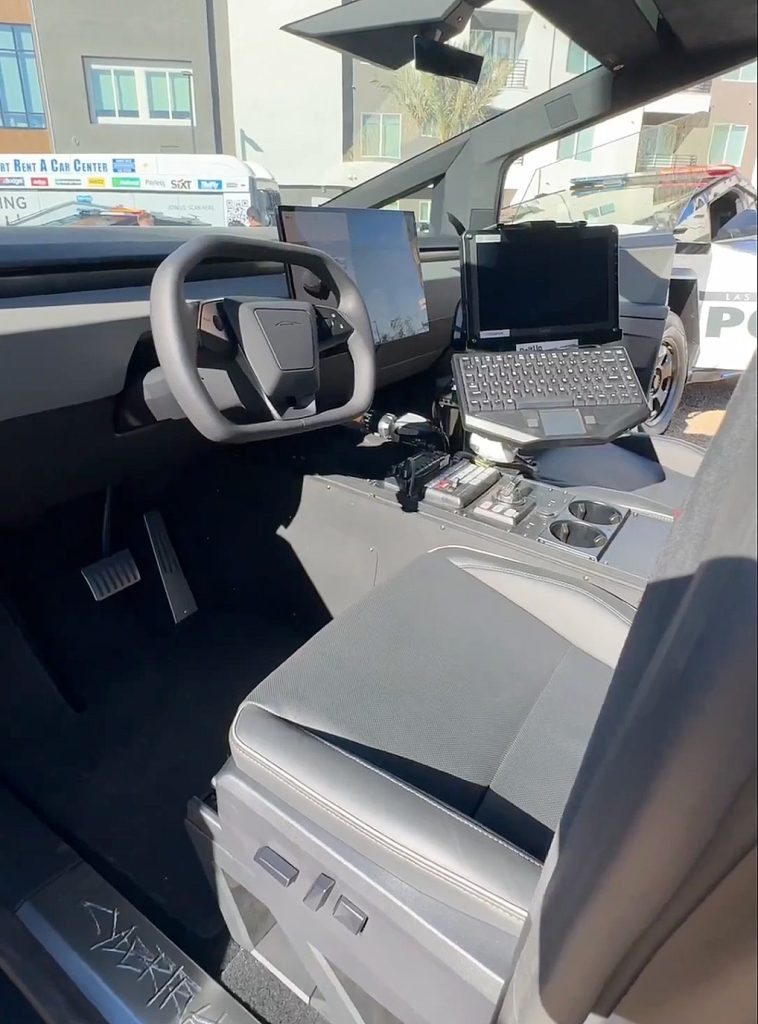
The rear of the cruiser is plain and fitted with plastic seats, typical for the transportation of criminals and suspects, as well as a partition that appears to be made of ballistic glass, helping to protect officers from those they have arrested. It is also reinforced with steel and foam lines the top of the partition:
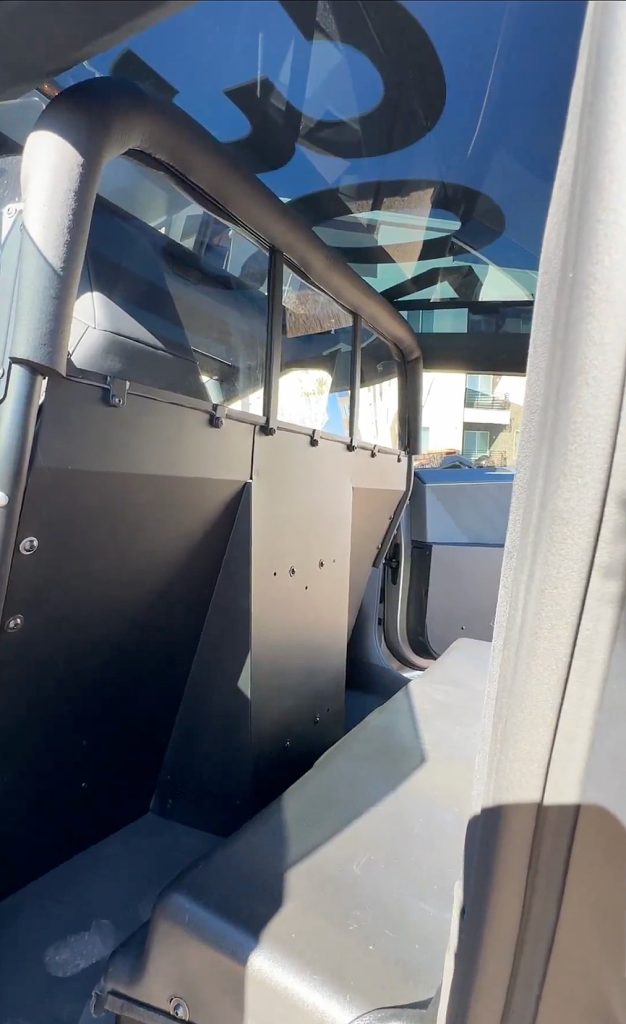
The fleet was donated shortly after a Cybertruck exploded at the front entrance of Trump Tower in Las Vegas in January. While the person inside lost their life, the Cybertruck’s ability to muffle most of the blast and keep damage relatively limited to the building impressed many.
News
Tesla Cybercab spotted testing on public roads for the first time
The car was spotted just minutes from Tesla’s Engineering Headquarters in Los Altos, California. There are a few interesting tidbits we can gather from the photo and the information shared with it.
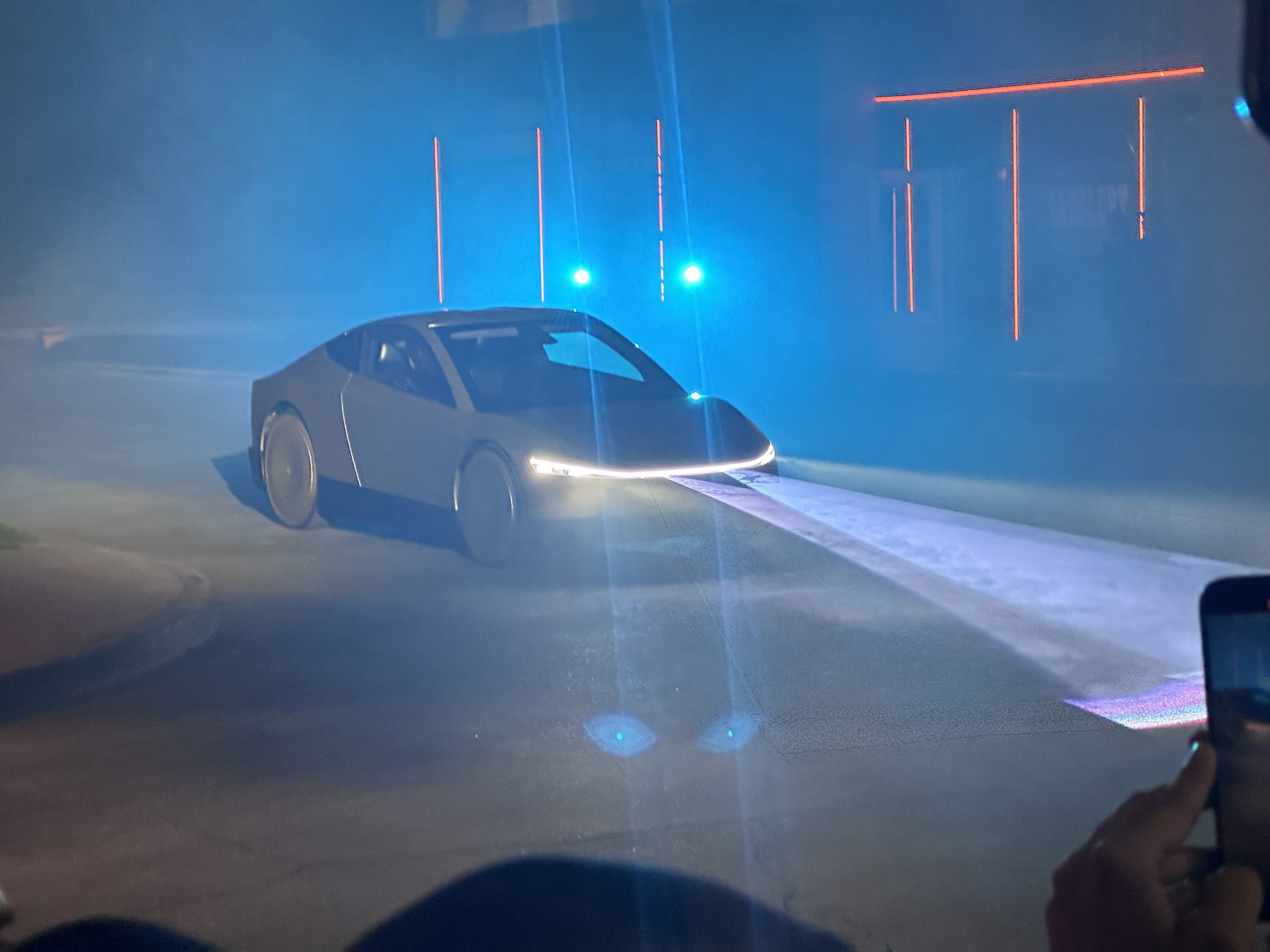
The Tesla Cybercab has been spotted testing on public roads for the first time, marking a substantial step forward in the vehicle’s development.
The car was spotted just minutes from Tesla’s Engineering Headquarters in Los Altos, California. There are a few interesting tidbits we can gather from the photo and the information shared with it:
BREAKING: Tesla’s Cybercab spotted testing on public roads for the first time!
This was in Los Altos, California, about 10 minutes from Tesla’s Engineering HQ. As would be expected at this stage, a person was in the driver seat.
The future is autonomous 🤖 pic.twitter.com/cvd6UrnKZo
— Sawyer Merritt (@SawyerMerritt) October 29, 2025
The vehicle had a driver and side view mirrors equipped on it, which seems to be pretty expected, especially at this stage.
Tesla might have been using its Full Self-Driving software with the vehicle as it enters this new stage of testing on public roads. This seems most likely, especially as the car, which has long been developed to be void of a steering wheel and pedals, will totally rely on autonomous tech to transport one or two passengers to their destination.
Additionally, side view mirrors are required by law at delivery, and Tesla was likely looking to keep things as safe and elementary as possible, especially with this early stage of testing.
As this is the first time the vehicle has been spotted on public roads and the first time it was likely testing on them, Tesla was being cautious.
There have been a lot of developments with Cybercab over the past few weeks, as the car has been spotted testing on the Fremont Factory’s test track, units have been seen outside of Gigafactory Texas’s crash testing facility, and there has been some additional speculation about what the vehicle’s standard equipment will be.
There have also been quite a few job postings by Tesla for manufacturing and production roles related to Cybercab over the past few weeks.
Yesterday, Tesla’s Board Chair, Robyn Denholm, revealed that the company could end up building Cybercab with a steering wheel and pedals, contrary to what Tesla and CEO Elon Musk have wanted to do.
The vehicle has yet to reach that stage of regulatory testing, but Tesla wants to start volume production in Q2. If it wants to release the vehicle without any manual controls, that means that Full Self-Driving will need to be completed within the next eight months.
News
Tesla hints it could see ‘a few more vehicles’ released soon
Denholm said on CNBC yesterday that “we do have a few other vehicles coming out.”
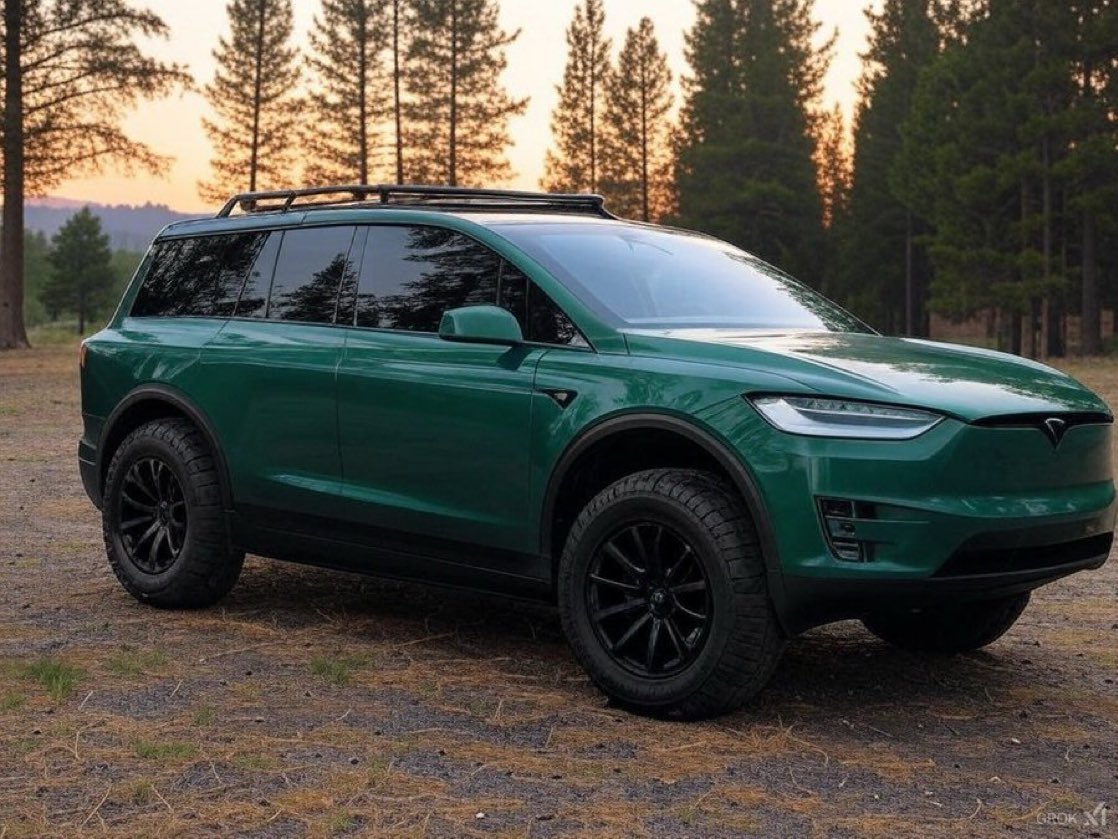
Tesla Board Chair Robyn Denholm hinted the company could see “a few more vehicles” coming out and being released soon, although there is no indication of what could be on the way based on her comments.
However, Tesla has hinted toward several potential releases in the coming years, as other executives, including Chief Designer Franz von Holzhausen, have talked briefly about what could be on the way.
Denholm said on CNBC yesterday that “we do have a few other vehicles coming out.”
BREAKING: $TSLA BOARD CHAIR ROBYN SAYS — “WE HAVE NEW VEHICLES COMING OUT” 👀
It’s happening ! pic.twitter.com/f8UuZWGLuP
— TheSonOfWalkley (@TheSonOfWalkley) October 27, 2025
It was a vague and almost cryptic sentence, as, in all honesty, it was not completely clear whether she was talking about recent releases that are just making their way to market, like the Model 3 and Model Y “Standard,” or new vehicles altogether.
Nevertheless, it’s worth dissecting.
Tesla “Standard” Models
On October 7, Tesla launched the Standard Model 3 and Model Y, stripped-down versions of their now “Premium” siblings. The Standard trims lack premium features like leather seats, a rear touchscreen, and a glass roof, among other features.
These cars are just starting to be delivered for the first time, so it is possible that Denholm was referring to these cars.
Potential Model 2 Hint?
There has always been a looming vehicle model that many Tesla fans and owners have been intrigued by: the Model 2.
This car was hinted at being the $25,000 model that Tesla was rumored to be developing, and many thought that was the vehicle that would be released earlier this month, not the Standard Model 3 and Model Y.
Instead, the Model 2 could be something that would enable Tesla to reach an entirely new consumer base, including those who are not able to swing the payment for the company’s more premium offerings.
It seems Tesla will have to launch some sort of extremely affordable model in the future, and with the Cybercab being slotted at that rough price point, it would not be out of the question for it to be in the realm of possibility for future releases.
It’s worth noting, however, that it is probably unlikely this will happen. Tesla is so deadset focused on autonomy, it seems Cybercab would take extreme precedence over the unconfirmed “Model 2.”
Cybertruck-inspired SUV
Tesla fans have been begging the company to develop a full-size SUV that would compete with the Ford Expedition or Chevrolet Tahoe, but the company has not given any indication that this would be something it would build.
Nevertheless, there was a very subtle hint in a recent promotional clip that showed a Cyber SUV mock-up placed strategically next to a clay model of a Model 3:
The Model X is simply not what people want when it comes to an SUV, as it does not have the seating capacity and cargo space that many need with a full-sized SUV.
This issue, in particular, has been one that has been extremely relevant to the company’s future lineup as consumers have shown they would be interested in a Tesla vehicle that fit this description.
Additionally, von Holzhausen said in September that a Cyber SUV or a smaller electric pickup with a more traditional design is “definitely things we’ve considered…We’re working on so many innovative and fun things.”
Tesla gives big hint that it will build Cyber SUV, smaller Cybertruck
-

 Elon Musk2 weeks ago
Elon Musk2 weeks agoSpaceX posts Starship booster feat that’s so nutty, it doesn’t even look real
-

 Elon Musk2 weeks ago
Elon Musk2 weeks agoTesla Full Self-Driving gets an offer to be insured for ‘almost free’
-

 News2 weeks ago
News2 weeks agoElon Musk confirms Tesla FSD V14.2 will see widespread rollout
-

 News2 weeks ago
News2 weeks agoTesla is adding an interesting feature to its centerscreen in a coming update
-

 News2 weeks ago
News2 weeks agoTesla launches new interior option for Model Y
-

 News2 weeks ago
News2 weeks agoTesla widens rollout of new Full Self-Driving suite to more owners
-

 Elon Musk2 weeks ago
Elon Musk2 weeks agoTesla CEO Elon Musk’s $1 trillion pay package hits first adversity from proxy firm
-

 News2 weeks ago
News2 weeks agoTesla might be doing away with a long-included feature with its vehicles



